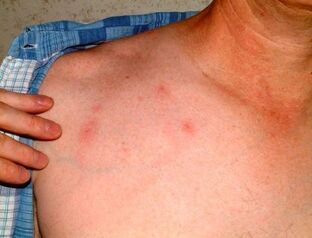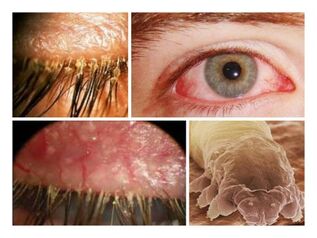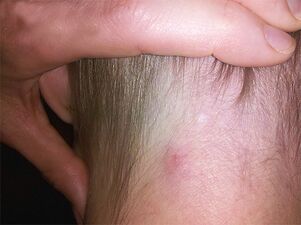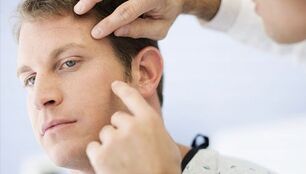
Photos and videos of subcutaneous parasitic symptoms in humans are not a pleasant sight. Unlike intestinal worms, which a person does not know existed, it is easy to see epithelial infections. In this situation, a person feels constant discomfort due to the symptoms that accompany the lesion. This helps to diagnose the disease and start treatment as soon as possible. Photographs of subcutaneous parasites in humans evoke feelings of hatred, but the symptoms of infection are more unpleasant. The picture does not realize that a person's feelings are creeping across someone's body. However, epithelial infections are not only a concern, but also a significant threat to the health of the whole organism. The toxins secreted by the parasite's body can affect all organ systems, and the helminths themselves like to spread to the human body. Thus, the manifestation of dermatological problems can be a sign of danger to the patient's life due to the presence of helminths in the brain, visual organs or heart.
What parasites live on the skin?
Dermatological problems can lead to various infections. If the presence of worms is most often diagnosed during an intestinal infection, insects and protozoa can also be found under the skin. Mosquitoes, ticks and other blood-sucking parasites generally feed and separate from humans imperceptibly, but there are those that continue to live and multiply in the body.
Each of these types of infections has a way of entering the human body. The symptoms and effects of the infection are also very different. Therefore, the treatment of the disease will take place in different ways. However, a long-term diagnosis is needed to differentiate one parasitic infection from another and to determine who lives in the body. A doctor who knows the characteristics and habitats of the various parasites will tell you the most likely option before testing, focusing only on the symptoms and the patient's travel map of the world.
Parasitic microorganisms
The most common disease of this type is leishmaniasis. This is caused by the simplest parasites that cause pathology. 9 out of 10 infections occur in only a few countries:

- Syria;
- Iran;
- Saudi Arabia;
- Afghanistan;
- Peru;
- Brazil.
The disease is transmitted by mosquitoes and some species of flies. Pathogens do not survive in temperate climates, so you can get leishmaniasis only after resting in tropical countries with a tropical climate.
When infected, the infection forms an ulcer at the site of the insect bite. It heals over time and leaves a untidy mark. With multiple foci, leishmaniasis can look like leprosy. The danger of this disease is that it passes from the skin to the lymphatic system and can gradually destroy them by affecting the internal organs. At the same time, parasites live inside the cells, so the immune system is of little use in the fight against protozoa. However, immunity develops after a single experience to combat leishmaniasis.
Insects among subcutaneous parasites
Diseases caused by such an invasion are called entomoses. There are several types of these subcutaneous parasites in humans:
- Sarcopsillosis (tungiasis).It's called tropical sand lice. It is enough to walk barefoot on the beach or lie in the sun to crawl on the body. The blood hides imperceptibly under the outer layer of the epithelium until it is intoxicated. Then the flea "gets fat" and begins to press on the surrounding tissues, causing discomfort. When it dies, it is removed from the body with dead skin. If this does not happen, the tissue may become infected and abscessed.
- Dermatobiasis.South American human gadfly, larvae inject under human skin. When fully developed, they tear the tissues and leave the body, leaving an open wound. In case of damage to the skin on the eyelids and cartilage, health-threatening consequences are possible.
- Acariasis.These diseases are caused by ticks. The most common is pruritus, which lives and multiplies under the skin, nourished by cells. Signs of itching can be easily distinguished from itchy urticaria by filamentous stripes - ducts in the epithelium eaten by the female parasite. Another tick, Demodex, causes dermatitis and baldness.

Insects that live in the human body often live in southern countries, because their development requires a stable warm climate. But in some cases, it is enough to visit the sea in the summer to fight subcutaneous parasites for several months.
Parasitic roundworms and more
Subcutaneous worms are not difficult to detect in humans. They are usually treated in the same way as other infections - redness, itching and burning. However, in some cases, the epithelium is only intermittent, and the main development of the pathology continues in the internal organs:
- Dirofilariasis.There are several types of these helminths. Some prefer to be located in the internal organs, but there are those that affect the skin and eyes. Parasitic larvae are carried by mosquitoes and live in warm regions. A painful, soft, moving tumor swells at the site of the lesion. The infection is not dangerous if it does not affect the visual organs. But surgery is needed for treatment.
- Drakunkuliaz.Rishta worms enter the body with water, which are small crustaceans that keep the larvae in the stomach. Through the intestines, helminths penetrate the abdominal cavity, where they unite and lay eggs in the muscle tissue in the region of the joints and bones of the legs. When a new worm matures, the larva breaks the skin and emerges. The only way to relieve the burning sensation and pain is to put the joint in water. Other ways to get rid of parasites in the body have not yet been invented.
- Schistosomiasis.Not all worms under human skin are infected with food. Swimming in the freshwaters of tropical countries in South America, the Caribbean, Africa or Southeast Asia is enough to infect schistosomes. Skin lesions resemble itching and are accompanied by tingling. However, after a while, the larvae penetrate deep into the body, after which the epithelial symptoms disappear and the next stage of the disease develops.
- Gnathostomosis.Humans are not natural hosts for this parasite. Therefore, worms cannot reproduce in the body. Therefore, the Asian parasite enters the body with fish, frogs or a fairly thermally processed bird. The larvae begin to migrate after a month. They cause itching, redness and pain when moving under the skin. Appearance in the abdomen is accompanied by edema.

After the first signs of helminths appear under the skin, the patient should be examined and treatment should begin. Many parasites can significantly worsen health conditions, including disability, if not eliminated in a timely manner.
Diagnostic procedures
Given the various parasites that live under a person's skin, there is no universal method that can help determine the exact cause of the disease. We must also remember that insects and worms are not the source of possible dermatological problems. Allergic reactions, fungal growths and bacterial infections are more likely to cause urticaria and dermatitis.
The first stage of parasite search on human skin begins with examination. The doctor conducts a survey, examines the affected areas and asks about other symptoms. Thus, it will be able to narrow the search area and, in some cases, to prescribe immediate treatment for, for example, dracunculiosis and dirofilariasis.
If the physical examination did not help to fully clarify the image, laboratory and hardware diagnostic methods are prescribed:
- Blood test.General analysis reveals the body's response to infection. Thus, a specialist can determine the nature of the disease. When conducting biochemistry, it is necessary to pay attention to the indicators of erythrocyte sedimentation rate and the composition of eosinophils. If they are elevated, it means that helminthiasis is very likely. ELISA analysis is the most accurate. If there is such a parasite in the body, it will help determine the presence of antibodies.
- Fecal analysis.Many subcutaneous worms are primarily in the intestines. You can find helminth eggs by examining the stool and start treatment.
- Biopsy.Analysis of the composition of the affected tissues, purulent abscesses and blisters, swollen lymph nodes can also reveal the picture of the disease.
- Ultrasound, X-ray, CT and MRI.Various leading methods of "scanning" the body will help to localize the source of infection under the skin and in internal organs. In some cases, this is the only effective diagnostic method.

Some infections can be diagnosed only after treatment, when the parasite is cleared from under the skin.
Treatment of parasitic diseases
Depending on the type of parasite, doctors must use different methods to get rid of the infection:
- The simplest microorganisms are killed by a course of antibiotics. Compulsory is accompanied by symptomatic treatment.
- You can get rid of ticks using special ointments and tablets. At the same time, dermatobiasis is cured only by surgery to remove the larvae from under the skin.
- The treatment of helminthiasis depends directly on the type of parasite. Thus, dirofilariasis is treated only surgically. Antihelmetics will help get rid of schistosomes and intestinal parasites. Treatment of dracunculiasis is generally not provided. A person has to wait for the worm to separate from the body and fight the symptoms: pain and inflammation.
In any case, to ensure complete elimination of parasites, it is necessary to undergo a thorough examination by a physician and begin treatment under his guidance.






































